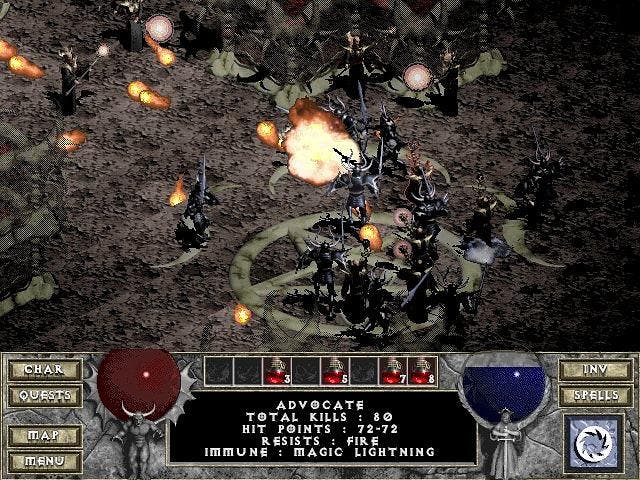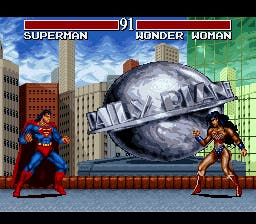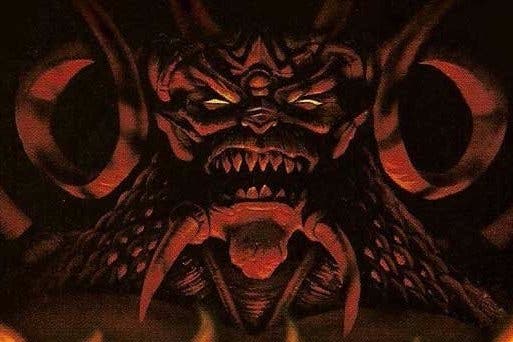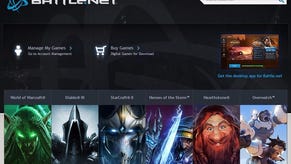The moment Diablo - and the action-RPG genre - were born
"I remember taking the mouse. And I clicked on the mouse."
It's pretty rare that the moment an entire video game genre was conceived can be pinpointed to the second. But David Brevik, lead programmer, designer and co-creator of Diablo, did just that during an anecdote-packed postmortem session at the Game Developers Conference earlier this month.
Brevik, along with the brothers Max and Erich Schaefer, had been fooling around with the idea for the game for years: a dark, Gothic role-playing game with procedurally generated dungeons, influenced heavily by Rogue, Nethack and the other early roguelikes. Brevik, also a huge fan of the squad tactics game X-Com, had always insisted that it should be turn-based.
Even after their young Bay Area studio - then known as Condor - had partnered with Blizzard to develop the game in earnest, Diablo remained a turn-based game, governed by a complex system where each turn was divided into short units of time, and different spells and actions would take different lengths of time to complete. Blizzard, then riding high on the success of the first Warcraft, was enthusiastic about the game, but insisted that it would be better if it ran in real-time.

Brevik wasn't convinced. "We said, 'What are you talking about, no no no, this isn't one of your strategy games,'" he recalled. "I love the sweat in turn based games, especially when it's a roguelike and you've made a turn, and you're down to one hit point.... I really loved that tension," he said. "And they said, 'Yeah, but, you know... real-time will be better.'" Blizzard gradually persuaded other members of the studio - which became Blizzard North after the southern California developer acquired it - that it was right, until Brevik was the lone hold-out. "Finally, one day, we decided to have a talk, we voted in the kitchen, I voted no, and everybody else voted yes."
This was five or six months into development. Brevik called Blizzard to let them know that they would have their way, but it would cause a huge delay to the project and they'd need an additional milestone payment. Blizzard agreed, but Brevik had wildly overestimated how difficult it would be. "I sat down on a Friday afternoon - and, in a few hours, I had it running."
And that Friday afternoon was the moment action-RPGs - at least in the isometric, point-and-click form pioneered and dominated ever since by Diablo - were born.
"I can remember the moment... this is one of the most vivid moments in my career. I remember taking the mouse. And I clicked on the mouse. And the warrior walked over and smacked the skeleton down.
"And I was like, 'Oh my god! That was awesome!'"
Diablo, from its dark and detailed aesthetic to its randomised design, was absolutely Condor's creation, but Blizzard had seen to the heart of it and and perceived the changes that could make it truly special. There was clearly a rare synergy between the two studios.

In fact, as Brevik revealed, these like minds were brought together by coincidence. At the Consumer Electronics Show one year, Condor was showing off some contract work - a fighting game for the Sega Mega Drive based on DC Comics characters called Justice League Task Force - when it was astonished to discover a Super Nintendo port of the same game, also commissioned by the publisher Acclaim, but developed by a different studio in complete ignorance of their version. That studio was Silicon & Synapse, soon to be renamed Blizzard Entertainment.

The two studios discovered a shared passion for PC gaming, and Blizzard promised to hear Condor's pitch for Diablo - which publishers were turning down on the grounds that "RPGs are dead" - as soon as it was done with Warcraft. The original design document is online, and it's notable both how much changed - including a historically misguided plan to sell micro-expansions, almost like card packs of items, on disk - and how much didn't, down to the isometric layout. (Brevik revealed that the dimensions of the tiles were copied, to the pixel, from X-Com. "The actual tile square basis is exactly the same. All the technology we built was based on a single screen grab from X-Com.")
After hearing the pitch in January 1995, Blizzard had only two major notes - but they were really major ones. The first was that the game should be real-time, the second that it should have multiplayer. The issue was that Condor had no networking expertise. It also had no business savvy, and the budget for the game was completely unrealistic. "We were terrible businessmen," said Brevik. "We weren't even paying our taxes - I found out later that that was a bad idea."
The latter problem was solved at first by more contract work for 3DO, and later when Blizzard offered to acquire the studio. "We were like, yes, thank God!" said Brevik. In fact, 3DO then offered twice as much for Condor as Blizzard had, but Condor's sense of kinship with Blizzard won out. "We felt they got us and got the game, and were so close in culture and beliefs." So Condor became Blizzard North.
That left multiplayer. Out of its depth, the Bay Area team had been sticking its head in the sand, but it couldn't last forever. Once Blizzard was done with Warcraft 2, "the eye turned back on us", Brevik said. "They said, 'We're going to come up and take a look at your multiplayer code.' And they came up and they said, 'You don't have any multiplayer code.'"

Once again, though, the two studios turned out to be well matched. Blizzard sent what Brevik called a "strike team" from Irvine to San Mateo who made the game work in multiplayer themselves. Blizzard, frustrated with erratic online gaming services, had resolved to release its own such service with Diablo: Battle.net, written by Mike O'Brien, the networking "genius" who went on to found ArenaNet and make Guild Wars. Players were awed by how responsive and seamless the service was, but might have been surprised by what was going on behind the scenes. "Battle.net ran on one computer," Brevik revealed. "Because it was peer-to-peer, it was just connecting people, it was simple, and it ran really, really quickly." (The peer-to-peer connections enabled rampant cheating, however, so Diablo 2 would be a client-server game.)
Not all of the strike team's contributions were so helpful, however. "They also gave us some very strange suggestions: they wanted to remove the right mouse button, and bring the spell book up each time before clicking on monster. The most controversial thing was, they wanted to put food in the game." Years later, a similar cooking system to the one they'd proposed turned up in World of Warcraft.
Even with the help of Blizzard's strike team, however, finishing Diablo was painful. Brevik remembers getting up at 4am and going to bed at midnight every day for eight months. His wife was pregnant and the baby was due in late December 1996; so was the game. On December 10th, his wife called and said she was having contractions. "We desperately wanted to make Christmas but it just wasn't ready, and here was my worst case scenario," Brevik said. But it was a false alarm. The game shipped on new year's eve. Brevik's daughter was born on 3rd January 1997. "She waited for me to finish."
At the GDC session, a member of the audience called Shivam Bhatt asked Brevik how Battle.net had worked so well - hence the tidbit about it running on a single computer - and shared teenage memories of tying up his home phone line for three days straight playing this immediate, addictive and visceral role-player. Bhatt also confessed that he had pirated the game. "The 16-year-old me has carried guilt for 20 years, so I would like to actually give you the money that I stole from you." He walked up to the podium and deposited a few bills in front of Brevik to a huge round of applause.
Brevik grinned. His response was the same as it had been two decades earlier, in the moment that the game this man had just payed for came together.
"That was awesome!"









